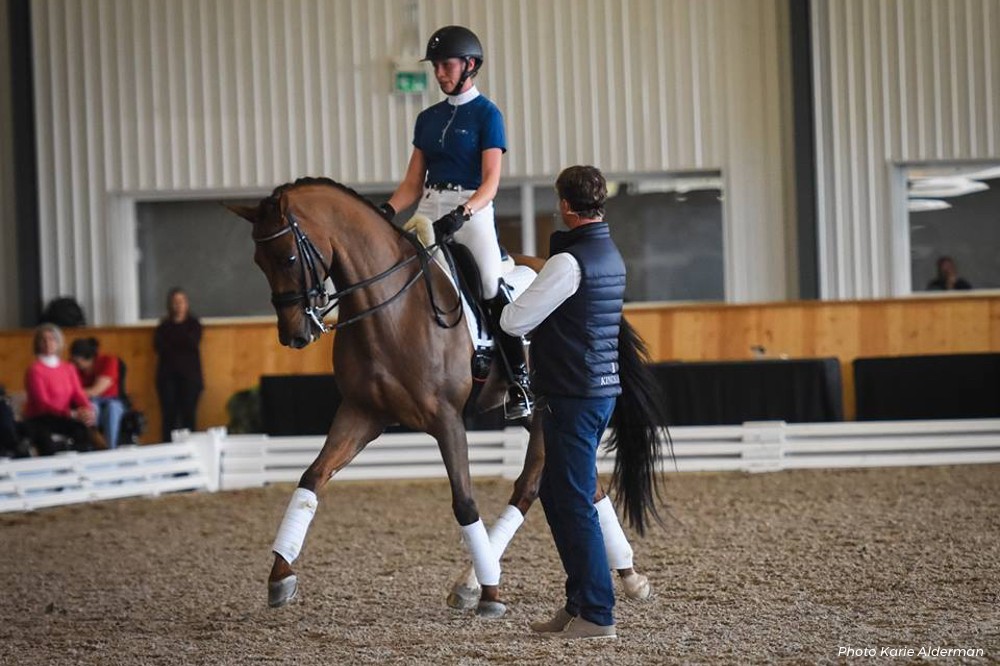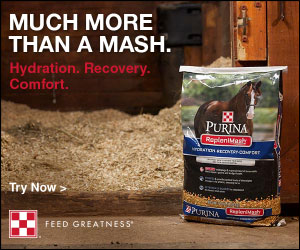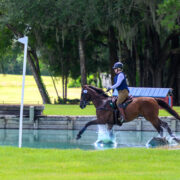Carl Hester on Your Job as a Trainer

When is enough, enough? As a trainer, it’s important to be aware of how much to ask a horse, particularly one that is young and/or green. Here are Carl Hester’s thoughts, collected during a Canadian clinic:
“Some horses aren’t ready. You get desperate. You really want to do it. Valegro won everything at four, five and six years old. But another horse might be too tense, so it’s not always about what you see. You have to believe in your horse.
If at four years old, it’s tense, it doesn’t mean your horse is not a Grand Prix horse. The horses that are spectacular in young horse classes, sometimes they don’t win later on.
Some horses will show tension by being hot, nervous, or spooky and other horses get introverted. That’s their way of being nervous.
If your horse doesn’t stretch at the beginning, it’s normal. At the end, give him a walk with a long rein. This will give the more tense horses confidence in their bodies.
Grand Prix is a dream – it takes another five or six, at least, years of work to get a horse to Grand Prix from its four-year-old year. The horse can get better. Focus on training and more relaxing.”
On Riding Without Stirrups:
Riding at home, I will ride without stirrups sometimes, especially if I’m a bit stiff some days, which inevitably happens as we get older. Or once we get over 50 anyway.
It sometimes helps at the start of a session to take the stirrups away and I canter.
Canter is easiest to get your body moving, if you feel stiff. The trot, it’s not supposed to be a punishment riding without stirrups. Your seat is continually developing. To actually develop your seat, you just don’t ride without stirrups and learn to sit on a horse and then suddenly, you’re a marvelous rider. I think the key to your core strong and your seat in the right place, it’s certainly helpful.”
On Balance and Position:
Reaction for young horses is so important, and it’s important that you start teaching young horses to react. Start early so that later on in Grand Prix you’re not over-working and over-riding. Just talking about riders sitting, sitting on a horse, you’ve got to think about position and balance. Your butt through your hat, and the weight from your hips through your heel.
Sitting on a horse is like trying to think about how you stand on the floor. If you all stand up we find the balance by ourselves. We stand upright. And when you’re getting on a horse, it’s the same thing. You’ve got to think about how you stand. It’s sometimes a way to be in the right position; standing. We have the line from your hip to your heel and your shoulder and upper body. It’s very basic to talk about lines, but think about standing up and how you balance yourself when you stand up.”
On Using a Whip:
“They’re not best friends. If you touch the horse (with the whip), the horse should react. You shouldn’t have to be slapping it. I think it’s something that a lot of people fall victim to very easily, they are so used to riding with a whip, the horse is so used to going only with a whip. So if you do use it, we have a reaction. I would suggest at home you ride a bit and you put it down. If you need it, you pick it up. This way, you don’t get used to riding with it all the time.
We’re always being told to ride forward, but if the horse isn’t balanced, you make it worse for yourself. You have to know how much you can push.”


